Even if you only have one dog, your backyard can quickly turn into an obstacle course of dog waste.
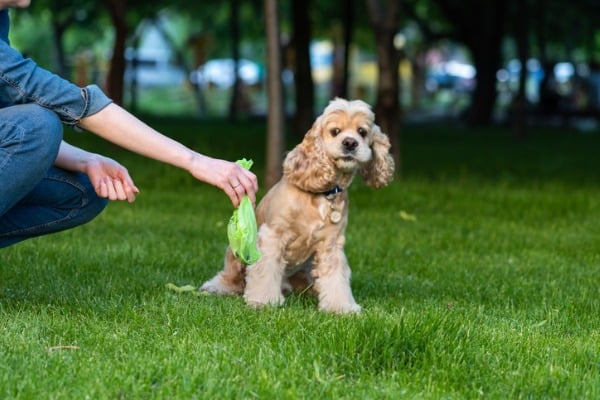
We’ve been there:
Throw a couple more pups into the pack, and the yard becomes impossible to navigate without stepping in something unpleasant.
We understand!
Regular cleaning of your yard is necessary when your dogs have free roam of the property – not just for your benefit, but for your dog’s as well.
The overall health and aesthetics of your lawn also require some pickup duty on a regular basis. Even the removal of dog urine in your yard becomes important.
The options?
There are the obvious solutions of using a pooper scooper or following your dog around with a roll of waste baggies every time they go outside.
However, not all pet moms and dads can keep track of each time their dog leaves a “gift” in the grass.
What then?
If you pick up the dog poop, there’s still the issue of what to do with it next.
Some people simply throw it away, but that’s not always ideal.
So how to break down dog poop?
There are several ways – some more practical than others – to dissolve dog poop in your yard.
Lime for Dog Poop – Yay or Nay?
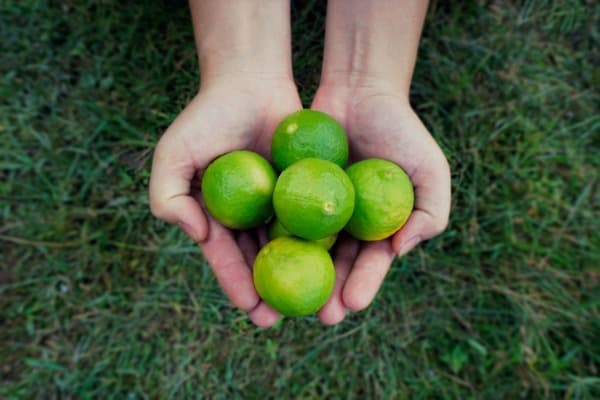
Using lime on dog poop can certainly help dissolve it quickly.
Around one cup of lime is enough to dissolve the average-sized poop; it will take less to clean up after small dogs and more to clean up after giant breeds.
It can take several days for the lime to dissolve dog poop on the lawn completely, but when it’s done, the poop is gone.
Lime is also budget-friendly and typically safe for the grass.
What’s the catch?
Lime is a highly caustic substance and not something you want to come into direct contact with. On the skin, lime can cause irritation and chemical burns.
Paws aren’t safe, either.
Lime that is exposed to moisture, or hydrated lime, poses a higher risk for skin irritation, and you might notice doggie’s paws turning red if they come into regular contact.
Since we can’t control the weather, it’s difficult to ensure the lime has a chance to dry completely.
Rain, humidity, and dew can all keep lime hydrated before it has a chance to dissipate into the soil fully.
Why does this matter?
It is not recommended to allow your dog – or anyone else, for that matter – to use any parts of the lawn where you used lime to dissolve dog poop.
You also don’t want to accidentally inhale lime, which is more of a risk when you’re spreading it while it’s dry. You also definitely don’t want to digest any accidentally.
The latter scenario is more likely to happen to your dog – especially if they have a habit of eating grass.
Ingesting lime can cause dangerous reactions, and if large amounts are swallowed, an emergency trip to the vet will be necessary.
What’s the takeaway here?
Lime is useful for dissolving dog poop, but only if you are prepared to cordon off the areas treated for days or sometimes weeks.
There is no set time on how long lime takes to integrate into the soil to the point it’s safe to walk on again.
Soil porosity and type, rainfall, climate, and use of sprinkler systems all affect the time frame.
It’s not practical for many pet parents to block off the sections in the yard that were treated with lime.
This will be a better solution if you like to rotate areas of your yard that your dog has access to.
Dogs can be trained to use only one part of the yard for their bathroom, and some pet parents leash their dogs in the yard, thus limiting the area in which they can eliminate.
If you want to give part of your yard a break and dedicate a new section for a dog restroom, lime can work to clean up the existing mess.
Be sure you, your dog, and the rest of your family stay off the lime-treated areas until there are no traces left on the grass.
Once the dog poop has been dissolved by the lime, it can help to give the grass a good rinse with the hose.
It will dilute the remaining lime and help it move into the soil.
Don’t forget:
Hydrated lime is more caustic. Even after spraying down the area with water, you should still keep everyone off the area until the yard has had a chance to dry out.
The Case for Enzymes
There are pros and cons to using enzymes as a dog poop dissolver, but we think the advantages make it the best option.
Why you ask?
The biggest plus is that it is much safer to use, which also makes it more practical.
You won’t need to block your dog or anyone else from areas of the lawn for safety purposes.
The downside is that spraying or sprinkling these substances directly on piles of poop doesn’t work, as well as treating poop that’s in a composter or septic tank.
That doesn’t mean it can’t help.
A product like Valterra Pure Power Blue Waste Digester and Odor Eliminator can help you deal with dog poop in your yard.
Being used directly on poop as opposed to pouring it into a tank would require it to be used with water. Wetting down the dog poop first is necessary.
Since whatever you’re treating is exposed to air and not in a tank environment, it might also take several rounds of treatment to see results.
You can effectively dissolve dog poop in your yard using an enzymatic dog waste dissolver, but it’ll require a few extra steps – or a composter.
Using Enzymes in Conjunction With Composters
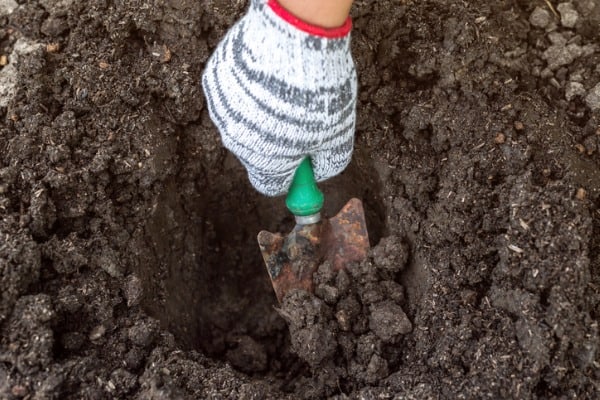
It would be ideal if we could use a dog poop spray dissolver on doggie doo and just walk away while it does its work.
This, as stated above, is an option if you’re willing to wait and possibly re-treat the areas.
It might not seem like it, but taking the extra step of picking up the dog poop can be easier in the long run.
A homemade dog poop dissolver looks less like something in a spray bottle and more like a composting facility.
If you pick up your dog’s poop with a pooper scooper, you probably don’t want to deposit it directly into your trash can.
Even if you were willing to cart it through your house and flush it down your own toilet, doing so multiple times a day puts more strain on your sewer system – and your water bill.
You probably shouldn’t lob it into your neighbor’s yard or someone else’s property, either.
So what to do with it?
Consider a doggie septic tank or DIY composter.
If your dog seems to poop a lot, this is definitely one method to consider.
Septic Tanks for Your Dog Run
This requires some effort in the beginning but can be very helpful in the long run.
How do you use a septic tank in your yard or dog run?
Step 1 – Dig the Hole
You’ll have to dig a sizable hole to install this type of septic tank, but don’t worry.
Once you have placed the septic tank in the ground, it’s barely noticeable.
The lid of the tank will be more or less flush with the ground.
You can even place rocks, and gravel, or add other landscaping elements around the tank to help it blend in with your yard.
Step 2 – Add Water
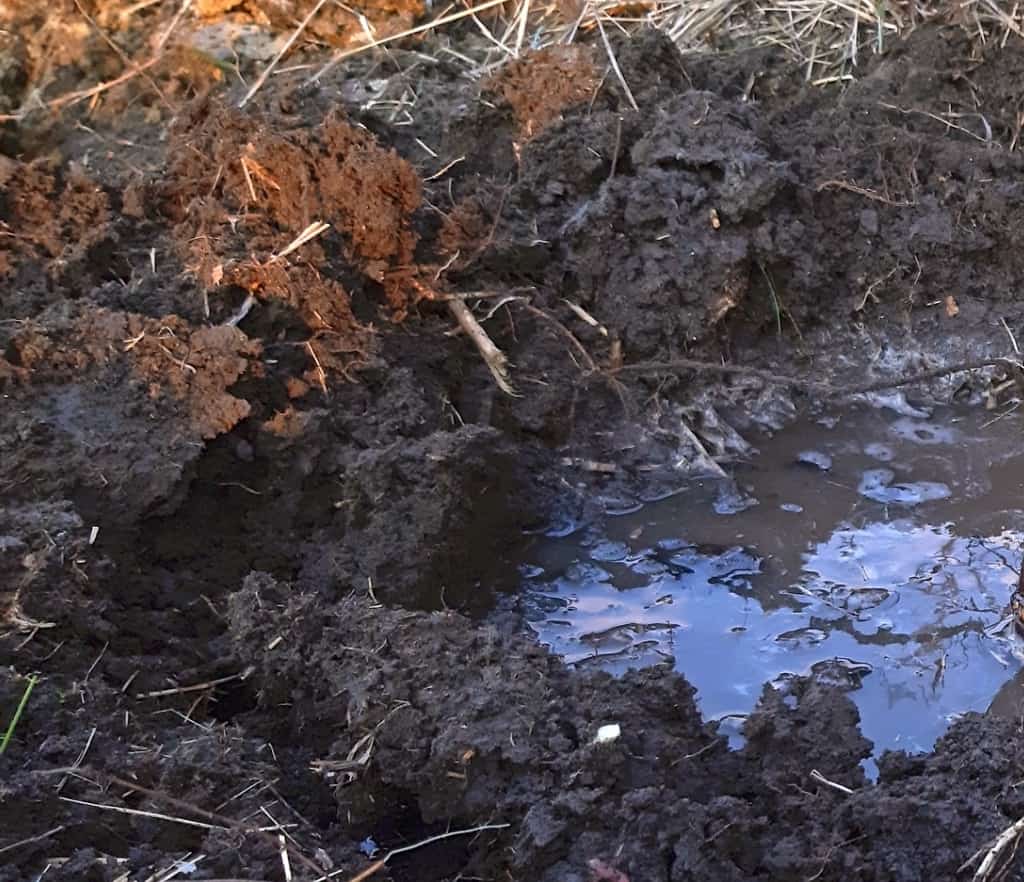
For a system like the Doggie Dooley septic tank, you’ll need to add 5-6 gallons of water to start and continue adding 1-2 gallons of water every few days or as needed.
Step 3 – Scoop the Poop
You’ll put the dog poop directly in the tank and replace the lid.
Larger ones can hold more waste from multiple dogs – if you’re struggling to make it all fit, you’ll need to upgrade to a larger model or install a second tank.
Step 4 – Use Enzymes
Cove Products Poop Be Gone Dog Waste Eliminator Powder works wonders to give your doggie septic tank a boost.
It’s a safe, natural dog poop dissolver, and using it in conjunction with a tank also helps cut down on odors you might notice in the vicinity of the disposal unit.
A little goes a long way – only one teaspoon of Cove Products Poop Be Gone is needed per treatment as a doggie doo dissolver.
Keep in mind that this only works as a dog doo dissolver when used in a disposal tank with water. It will be ineffective if you sprinkle it on dog poop in open-air environments.
It’s also essential to note that clay-heavy soils don’t play well with septic tanks.
If you have high clay content in your soil, it might be worth looking at a composter.
Septic tanks work best in warmer temperatures – many pet parents with tanks don’t use them during the coldest months.
DIY Dog Poop Composter
An alternative to dissolving dog poop via a doggie septic tank is a DIY composter.
You can buy one, of course.
However, if you’re willing to spend the time on a DIY project, it will save you money.
What will you need?
The project starts with a plastic garbage can with holes drilled in the sides and the bottom cut out.
So the essentials are the garbage bin and tools to modify it, like a regular drill.
You will also need gravel for the bottom of the unit.
Be prepared to dig a hole deep enough to place the garbage can – a good shovel is also a must for this project.
Septic tank enzymes are also helpful for getting your composter started. Or, you can DIY the whole thing, including the natural enzyme starter.
This video explains how this eco-option can easily be added to almost any yard.
When There’s Residue in Your Yard
If you pick up your dog’s waste and put it in the doggie septic tank or composter, you might find there’s still residue in your yard and on your grass.
Enzyme cleaners designed to clean up after accidents can also be very useful for eliminating odors in your backyard.
An enzyme cleaner like you would use on your carpet isn’t a dog poop spray dissolver, exactly. You can’t saturate a whole pile of waste and expect it to disappear.
It will, however, help with any leftovers on the lawn after you’ve removed the bulk of the waste.
Simple Green Outdoor Odor Eliminator is a safe and effective method for freshening up your yard. It works on urine smells, too.
Giving your lawn a once-over with an enzyme cleaner after getting rid of solid wastes is always helpful if you’re dedicated to keeping your yard clean.
Why Clean it Up?
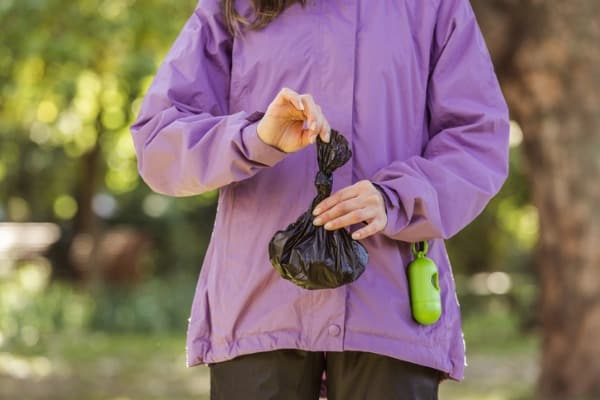
You probably know the obvious answers to this question, but let’s recap for the new pet parents.
Dog poop all over your yard is going to end in someone stepping in it eventually – and possibly tracking it indoors.
It’s also considerate to neighbors – whether they have dogs or not, no one wants the smell of old dog poo wafting into their garden.
Even if you don’t have to worry about neighbors, you’ll notice the smell of a poo-covered yard eventually.
It’s not exactly the greeting you want when you step outside.
What’s more…
Dog poop also attracts flies – unwelcome pests that will make their way into your home no matter how hard you try to keep them out.
Who wants a fly landing on their food that just finished sitting on a pile of dog poop?
Some pet owners are faced with stopping their dog from eating poop if they’re bored or have developed the habit. Cleaning up is always a good first-course action!
Now, onto the health reasons as to why you should clean up dog poop.
Let’s hope your dog is fully protected against things like parvo and parasites. Does that mean their poop is now “safe?”
No, it doesn’t.
Dog poop can harbor all kinds of nasty bacteria – including salmonella and E. coli – that you don’t want to be tracked all over your house.
You should also know that if your dog got infected with parasites just once, even after deworming and preventive medication, the worm eggs could survive in the yard for months or even years.
Dog poop is also not so healthy for the environment. It’s not suitable fertilizer, and its acidity of it can even kill some plants.
The toxicity of dog poop also makes it useless for fertilizer on food-producing plants.
Don’t be tempted to use it on your tomato plants because it could render them unsafe to eat.
The bacteria in dog poop can also make their way into nearby water sources and contaminate them.
There is evidence that byproducts of dog waste are harmful to fish and other aquatic life.
These are just some of the reasons you don’t want dog poop sitting in your yard.
Dissolving it directly at the source or picking it up to dissolve in a doggie septic tank is the responsible thing to do.
Do Your Doody Duty
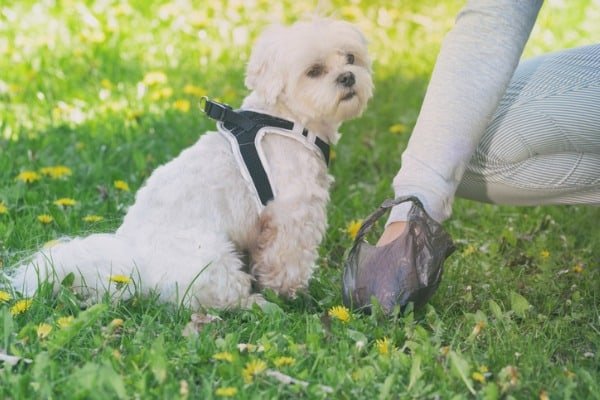
Responsible pet parenthood includes cleaning up dog waste – if for nothing else, to keep nasty smells to a minimum.
Doggie doo dissolver used directly on your lawn is an option.
However, the best bet is to use a doggie septic tank or composter in conjunction with an enzyme powder.
Septic tanks and composters provide the best environment to break down dog waste effectively.
They also keep the poop off your lawn, out of the local sewage system, and away from your trash cans.
Keeping your yard free of dog waste benefits everyone, your fur baby included.
